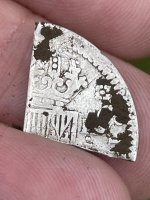Prime_Focus
Full Member
Here is another night time "find" although it was not exclusive to Iowa.
Normally, the weather for the Quadrantids meteor shower is so bitterly cold that I have never went out and tried to photograph them. Tuesday night however, was not too bad as far as the cold so I decided to give them a try. I drove about 50 miles west of Des Moines to get to some fairly dark skies although I could still see a small light dome coming from the city lights to the east. I got my camera all set up around midnight, set it for thirty second exposures, locked the cable release open and let it run. I got back in my pickup, turned the heat on and enjoyed some coffee and the internet for the rest of the night. I got out a couple of times to change the area of the sky the camera was recording and of course, to watch the meteors. It was a little slow until around 3:00am and they started picking up quite a bit.
The first picture is from the midnight to 3:00 period. I only got one in the field of view but it was a bright one. I saw another one that was a whole lot brighter than this one but it was off to the south. It also was not a Quadrantid as it was moving a different direction than a Quad would have been.

This next picture is a combination of all of the 30 second images I took between 3:00 am and around 5:00 am. I had pointed the camera to a different part of the sky after the moon went down at 3:00. I managed to get four meteors in this stacked image.

As dawn approached and the eastern sky was starting to slowly brighten, I pointed the camera off to the darkest part of the sky in the west. I only caught one meteor in that last hour but it was a beauty.

It was a gorgeous night with the moon lighting up the first half of the night and the coyotes and farm dogs challenging each other throughout the night.
Normally, the weather for the Quadrantids meteor shower is so bitterly cold that I have never went out and tried to photograph them. Tuesday night however, was not too bad as far as the cold so I decided to give them a try. I drove about 50 miles west of Des Moines to get to some fairly dark skies although I could still see a small light dome coming from the city lights to the east. I got my camera all set up around midnight, set it for thirty second exposures, locked the cable release open and let it run. I got back in my pickup, turned the heat on and enjoyed some coffee and the internet for the rest of the night. I got out a couple of times to change the area of the sky the camera was recording and of course, to watch the meteors. It was a little slow until around 3:00am and they started picking up quite a bit.
The first picture is from the midnight to 3:00 period. I only got one in the field of view but it was a bright one. I saw another one that was a whole lot brighter than this one but it was off to the south. It also was not a Quadrantid as it was moving a different direction than a Quad would have been.

This next picture is a combination of all of the 30 second images I took between 3:00 am and around 5:00 am. I had pointed the camera to a different part of the sky after the moon went down at 3:00. I managed to get four meteors in this stacked image.

As dawn approached and the eastern sky was starting to slowly brighten, I pointed the camera off to the darkest part of the sky in the west. I only caught one meteor in that last hour but it was a beauty.

It was a gorgeous night with the moon lighting up the first half of the night and the coyotes and farm dogs challenging each other throughout the night.


 The funny thing is, about 4:00 this morning the first thing I seen as I walked out in my driveway was one falling to the north, kind of a cool way to start the day. That must have been a nice way to spend the night, I used to like fishing at night partly for all the things you could see in the sky.
The funny thing is, about 4:00 this morning the first thing I seen as I walked out in my driveway was one falling to the north, kind of a cool way to start the day. That must have been a nice way to spend the night, I used to like fishing at night partly for all the things you could see in the sky.

 What a sight to see, glad you had your camera!
What a sight to see, glad you had your camera!


